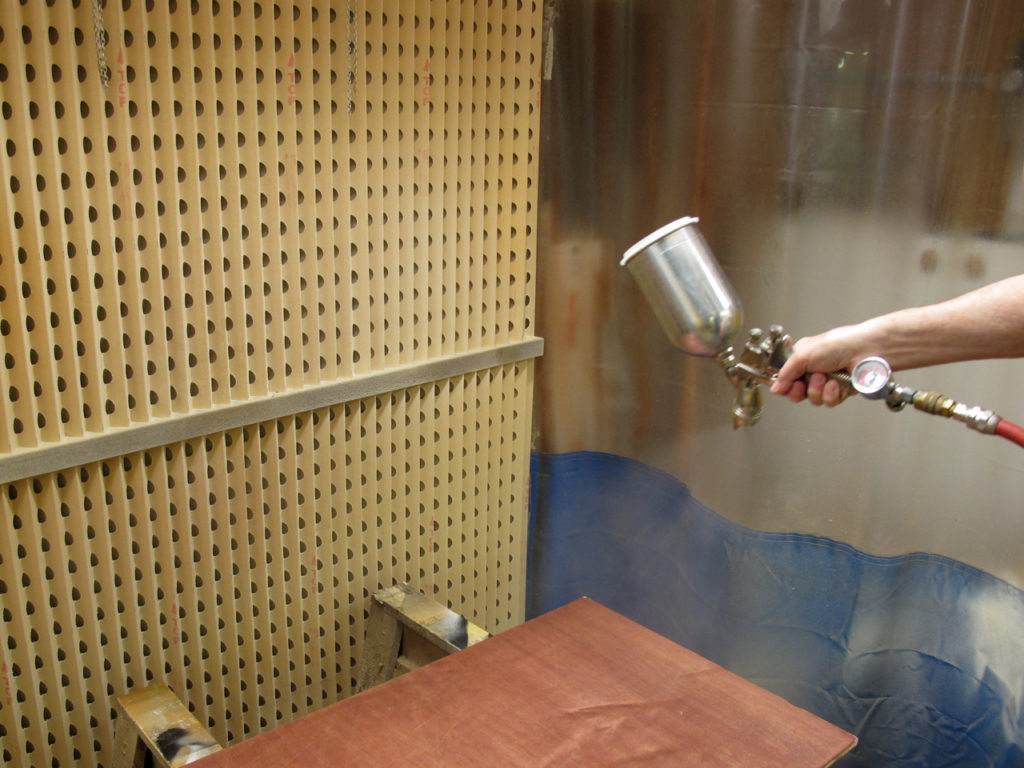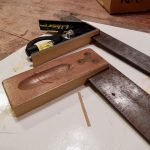We may receive a commission when you use our affiliate links. However, this does not impact our recommendations.

To spray a dustcoat, hold the gun farther than normal away from the surface and move the gun faster than normal. Watch what’s happening in a reflected light to be sure the coat isn’t wetting the wood.
I’ve told you the three main ways to deal with silicone contamination in my May 10 post: clean the wood well with solvent or an alkali soap before applying the finish; seal the wood with shellac; and/or add silicone oil (fish-eye flow out, fish-eye eliminator, Smoothie) to the finish. There’s a fourth way I didn’t mention because it’s much harder to pull off. But thinking of it reminds me of several instructive finishing lessons I learned many years ago.
When I first experienced the fish-eye problem, I didn’t know what to do. So I walked down to the nearby paint store where I bought my supplies and asked Glenn. He had been around paints and finishes for decades, and he helped me out of many bad situations. But, as I’ve told you before, he misled me (not intentionally) about an equal number of times. This experience led to my “half-right rule.” Half of what you read or hear about finishing is right. You just don’t know which half.
So Glenn told me the name of the problem and sold me a little bottle of fish-eye eliminator. He told me to add one drop to the finish in my spray-gun cup, and that would fix the problem. I did this and, of course, it didn’t work. But I didn’t know why (I needed to add closer to an eyedropper full), so I just figured this advice belonged to the half of the half-right rule that didn’t work.
I had noticed, though, that when the coat I sprayed wasn’t really wet, the fish eye didn’t happen. So I developed the fourth method.
It is to spray many dustcoats of the finish (lacquer) on the contaminated wood, then after creating some build, spray a coat that is just wet enough to dissolve all the dust coats into one thicker coat but not so wet that it gets into the wood and causes the fish eye to come through. It takes practice to get this right, but I did it many times before I learned the better ways.
Then, many years later I was teaching a class on finishing and after explaining the three easier solutions, one of the students raised his hand and related the exact method I thought I had invented. I couldn’t believe it. He had “invented” it too.
Finishers and refinishers struggle hugely because of the half-right rule. So we have to figure out lots of solutions on our own. When we succeed, we naturally think we have invented something new, and many of us are reluctant to share. You may have encountered this reluctance at some point in your woodworking career. Now you may understand better where it comes from.
Here are some supplies and tools we find essential in our everyday work around the shop. We may receive a commission from sales referred by our links; however, we have carefully selected these products for their usefulness and quality.








